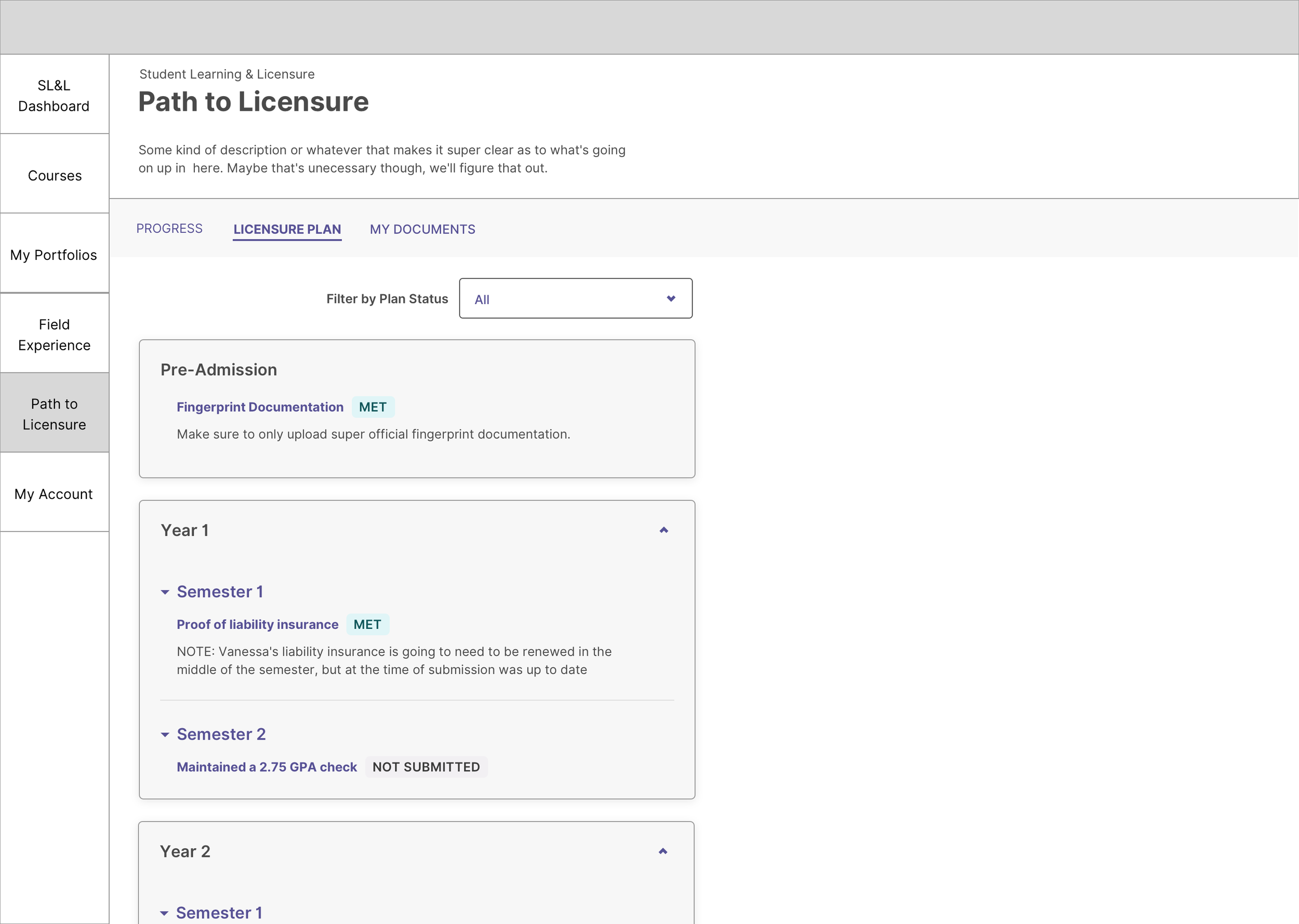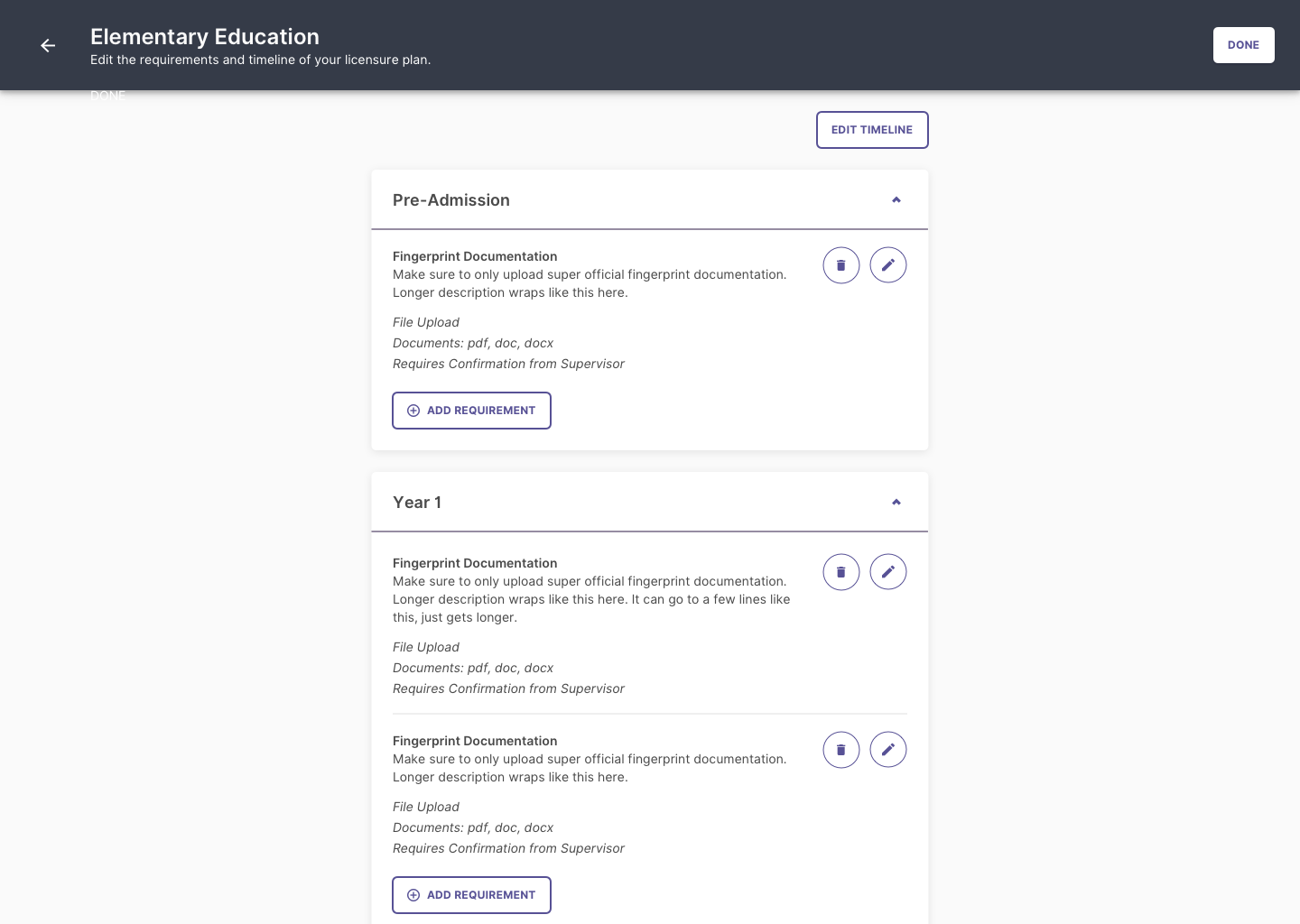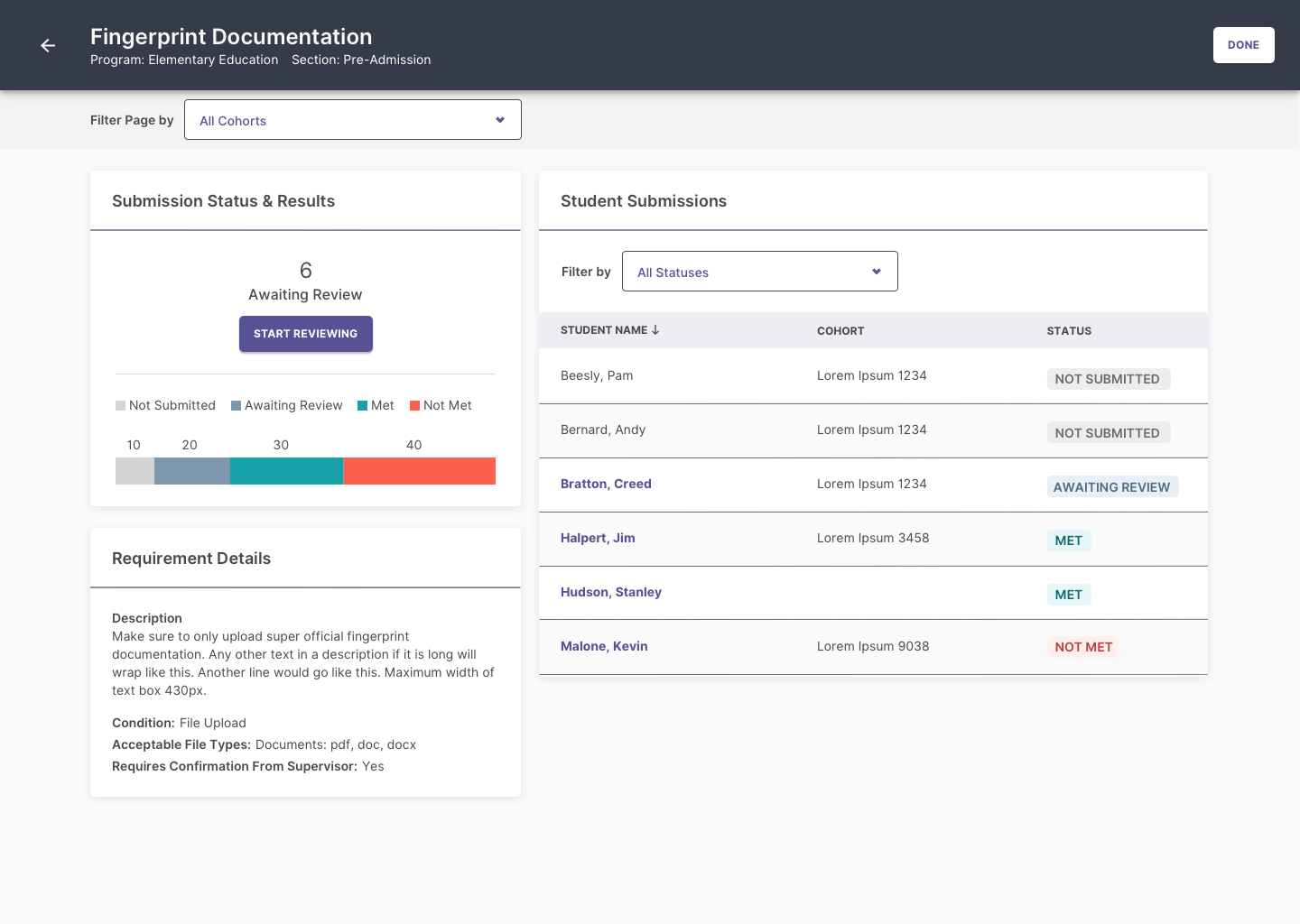
How To Create A New Kind Of Product And Become A better Manager In The Process.
Leadership & Innovation.
The Context
There are some academic programs — e.g. education, social work, or nursing — that require students to earn a license in addition to their degree to work in their selected fields.
The licensure process is complex and it was not uncommon for admins to use 10 or more different pieces of software to keep track of things in addition to physical paper work.
At the time, there were no solutions on the market that to address this problem so we decided to try and build one.
The Problem
One of the first major projects I took on as a Design Lead was to weave together a new product called Student Learning & Licensure (SL&L) out of five tools that had been acquired by my company — you can learn more about that here. A critical part of that work was identifying feature gaps that hadn’t been previously addressed in those tools so that I could work with product and engineering teams to find ways to resolve them.
When we realized that none of our competitors offered any solutions to streamline and consolidate the licensure process we jumped at the opportunity to fill that gap. But, of course, one of the reasons no one had tried to solve the problem is that was incredibly complicated.
The Process
In the absence of a clear solution, schools had been forced to come up with their own homegrown approaches to the problem which varied wildly. But, after interviewing as many licensure coordinators as we could, we found that there were a few common elements:
Even though the methods of collection varied, there were really only a few types of data that these programs needed to collect.
Requirements varied at different schools, but every coordinator we spoke to confirmed that each cohort of students was expected to complete the same requirements at the same point in the program — i.e. every student in their second semester was expected to complete a list of requirements even though the requirements themselves might vary across programs.
Once we’d established these common elements I was able to create a first draft built around the idea of creating individual, customizable requirements in a chronologically organized licensure plan.
Wireframe of a Licensure Plan.
Wireframe of an Individual Requirement.
This simple idea really resonated with the licensure coordinators we spoke to and felt like an enormous victory. Out of this chaos a clear solution was starting to emerge that looked like it was actually going to let us solve this problem.
I was thrilled at the progress I’d made and was eager to keep going, but my dedication to the project was starting to pull me away from other responsibilities. Specifically, some of my team members expressed that they needed more support and guidance from me to help with their projects. I’ve always believed that a manager’s first and most important obligation is to their team, so I made the difficult decision to delegate. My product partner and I worked out a plan to start transitioning the project to the Senior Designer on my team so that I could be more available to offer support and focus on the broader strategy for my product line.
My Senior Designer was excited to take on the project but also felt overwhelmed by the scale of it. So, as a part of the handoff I sat down with her and we worked out a cadence of recurring meetings that she felt would support her as got familiar with the project.
After a couple months she’d taken my original idea and fleshed it out into a fully realized product.
Final design for Licensure Plan.
Final design for an Individual Requirement.
She continued to work on the project for the next few years and truly made it into something amazing. The experience she gained and the skills she demonstrated throughout that project ultimately lead to a promotion to the role of design lead and a team of her own to manage.
It was hard to step back from a project like this but in the end it was the right thing to do. It created the space necessary for a valued colleague to grow and get the recognition she deserved and gave me the chance to learn critical lessons about how to manage a team and prioritize working holistically. Ultimately, this shift allowed me to foster the talent on my team and create a strategic plan for my product line that guided us for years.
The Results
Over the course of numerous iterations we successfully designed and built a feature that let our clients radically streamline one of the most crucial processes they had to manage.
This tool would go on to become one of the central pillars of SL&L and we used it to enable a number of new features that let us close critical feature gaps in the product.
The lessons I learned through this process would form the foundation of how I approached being a Design Lead, a manager, and a strategist.







